Summary
Objective: To survey patient satisfaction with post-operative pain care. Method: Cross-sectional descriptive study based on sample size. 118 post-operative patients at the Department of Plastic Surgery, Hanoi Medical University Hospital. Patient satisfaction according to Likert's 5-point scale.
Results: The results of communication about postoperative pain care between nurses and patients reached 98.31% at the very frequent and frequent score levels.
Patient satisfaction with nursing post-operative pain care reached 97.46% at high and very high levels.
Conclusion: The current status of patient satisfaction with post-operative pain care by nurses at Hanoi Medical University Hospital is 97.46%. Patient satisfaction is higher when nurses' pain management is good.
Problem statement
Surgery is a psychological and physical trauma for patients. In addition to worrying about illness and the results of surgery, patients are also afraid and insecure about post-operative pain. To help patients accept and overcome pain with peace of mind. Post-operative pain care by nurses plays a very important role. Post-operative pain is acute pain when anesthesia wears off. [1] Post-operative pain affects the patient's endocrine, metabolism, and spirit. Post-operative pain is also the cause of dangerous complications such as high blood pressure, arrhythmia, etc. Post-operative pain control is a necessary measure to help patients recover quickly and avoid complications for other organs and parts. Patients can rest assured during treatment. [2] Post-operative pain is one of the reasons why patients are not satisfied with the quality of treatment. According to WHO, post-operative pain care by nurses is especially important. Post-operative pain care in the cosmetic plastic surgery department has not been fully studied. We conducted this study with the following objectives:
- Survey of patient satisfaction with postoperative pain care by nurses at the Department of Plastic Surgery, Hanoi Medical University Hospital.
- Identify factors related to patient satisfaction with nursing post-operative pain care.
Research objects and methods
Study subjects: Post-operative patients receiving pain care. Data collected from October 2023 to February 2024. Patients voluntarily participated in the study. Random sampling during the study period. Patients with chronic pain pathologies were excluded. The study included 118 patients. The survey was conducted on the day the patient was discharged from the hospital.
Study design: Cross-sectional.
Data collection method: Based on two sets of questions on a Likert scale with 5 levels, scored from 1 to 5.[3] Questionnaire surveying patient satisfaction with nurses' pain care with 7 questions. Questionnaire on patients' comments on nurses' pain care communication skills with 7 questions.
Data processing using SPSS 20.0 software
Result
Through research on 118 patients, we obtained the following results:
3.1. Characteristics of patients participating in the study.
General characteristics | Quantity | Percentage |
Male | 63 | 53.39 |
Female | 55 | 46.61 |
Teenagers | 31 | 26,27 |
Middle-aged | 66 | 55.93 |
Elderly people | 21 | 17.79 |
High school | 70 | 59.32 |
University, college | 41 | 34.75 |
Postgraduate | 4 | 3.39 |
Other | 3 | 2.54 |
Table 2. Occupational characteristics and type of surgery of patients.
Occupation/Surgery | Quantity | Percentage |
Civil servants and public employees | 15 | 12.71 |
Students | 17 | 14.41 |
Private enterprise | 16 | 13.56 |
Freelance worker | 49 | 41.53 |
Retired, elderly | 21 | 17.79 |
PT. Flap Transfer | 33 | 27.97 |
PT. Skin grafting | 67 | 56.78 |
PT. Aesthetics | 7 | 5.93 |
PT. Trauma | 4 | 3.39 |
PT. Other | 7 | 5.93 |
3.2. Current status of patient satisfaction with post-operative pain care nursing.
Satisfaction | Quantity | Percentage |
Very high | 75 | 63.56 |
High | 40 | 33.89 |
Medium | 3 | 2.54 |
Short | 0 | 0 |
Very low | 0 | 0 |
3.3. Survey of nurses' communication with patients about postoperative pain care.
Result | Quantity | Percentage |
Very often | 82 | 68.64 |
Frequent | 35 | 29.66 |
Medium | 2 | 1.69 |
Little | 0 | 0 |
Few | 0 | 0 |
3.4. Relationship to patient satisfaction.
Satisfaction | Popular | University, College | SDH | Other |
Very high | 25 | 38 | 4 | 0 |
High | 14 | 3 | 0 | 3 |
Medium | 6 | 0 | 0 | 0 |
Short | 0 | 0 | 0 | 0 |
Very low | 0 | 0 | 0 | 0 |
Table 6. Correlation between patient satisfaction with surgery.
Satisfaction | Very high | High | Medium | Short |
Transfer flap | 21 | 11 | 1 | 0 |
Skin grafting | 48 | 16 | 3 | 0 |
Aesthetics | 7 | 0 | 0 | 0 |
Injury | 0 | 4 | 0 | 0 |
Other | 4 | 3 | 0 | 0 |
Discuss
4.1. Discussion of our research results:
Research on 118 patients undergoing surgery at Hanoi Medical University Hospital. Of which 63 men and 55 women were monitored. We have the following comments. Regarding the general characteristics of the patients: The number of patients between men and women is equal.
Accidents are common in middle age. Perhaps this is the main working age so there are many. The second group of patients we meet is teenagers. This is the active school age so accidents are common. Regarding education level, it is common in high school students. Perhaps the level of awareness about occupational safety and traffic safety is limited in this group of patients.
Postoperative pain is the most worrying psychological factor for patients. Anticipating that psychology, the hospital staff has proactively planned pain management. From explaining and encouraging patients before surgery to proactively managing pain immediately after surgery, there is a pre-prepared process. Therefore, the survey results on patient satisfaction in our study reached a very high rate and high at 97.46%. Compared with foreign authors [4], [3], the rate of patient satisfaction with our post-operative pain care is higher. Compared with author Kim Bao Giang [5] of hospital 108, the results are almost the same.
Regarding the communication with patients after surgery, we do it very often. The results of our research are at the level of 98.31% of the frequency and very frequency. This result shows that patients appreciate the regular visits and encouragement along with the correct and adequate implementation of the hospital's pain management procedures. This result makes patients trust the hospital more and feel secure in their treatment. The satisfaction of patients with the communication of nurses in pain management care in this study is much higher than that reported in other studies [5].
Nursing care for postoperative pain relief plays a very important role in restoring health and improving the quality of life for patients. Some key aspects of the role and work of nursing in postoperative pain relief:
Pain assessment and evaluation: Pain is the fifth vital sign: Nurses must consider pain as an indicator that needs to be assessed periodically, not just when the patient complains. Use assessment tools: Use standard pain scales to assess pain levels objectively and promptly. Usually every 60 minutes or as prescribed, and after pain relief interventions.
Observe signs: Monitor signs other than the patient's speech, especially in the elderly, children or people with difficulty communicating, such as facial expressions, heart rate, crying, restlessness, blood pressure, etc.
Implement pain relief orders: Administer medication: Inject, infuse or give the patient pain medication according to the doctor's orders. Ensure punctuality: Pain relief should be administered hourly instead of waiting until the pain becomes severe to administer the medication, in order to maintain a stable and effective drug concentration.
Monitor side effects: Closely monitor side effects of pain relievers for timely treatment and report to the doctor. Apply non-drug pain relief measures:
Psychological counseling: Listen, reassure, explain about pain and recovery process to reassure patients, reduce anxiety. Psychological factors greatly affect the feeling of pain. Change position: Support patients to change positions gently and comfortably to reduce pressure on the surgical wound and painful area.
Relaxation techniques: Instruct the patient in deep breathing exercises, muscle relaxation, use of heat therapy, hot compresses, cold compresses, or gentle massage.
Distraction: Use measures such as listening to music, watching TV, reading books to distract the patient from the pain.
Patient and family health education : Pain information: Help patients understand that postoperative pain is normal and controllable. Self-assessment instructions: Instruct patients on how to self-assess their pain level and notify the nurse if they feel increased pain.
Cooperate in treatment: Encourage patients to cooperate in taking medication and performing exercise and deep breathing to avoid complications. Pain will limit the patient's movement, which can easily lead to pneumonia and embolism.
Record and report: Record the level of pain, time of medication, type of medication, dosage and pain relief effectiveness in the medical record. Report promptly to the doctor if the pain does not decrease after the intervention or if unusual signs appear. Nurses are the ones who directly and regularly contact the patient after surgery, so pain management and care is a key task. Good pain management is not only humane but also helps the patient recover quickly, reduces complications and shortens the hospital stay.
4.3. Discuss the nurses' communication attitude with postoperative patients in pain care.
The nurse's communication attitude plays a core role and determines the effectiveness of postoperative pain care. Postoperative pain is not only a physical problem but also a psychological problem, and communication is the bridge to solve both of these aspects.
Show understanding and empathy: Importance: An understanding attitude is fundamental. When people are in pain, they need to have their pain acknowledged.
Active listening: Maintain eye contact, lean slightly toward the patient, and allow them to fully describe their pain without interrupting or judging.
Use empathetic language: I understand that you are in pain and discomfort right now. We will do our best to help you feel better.
Avoid being skeptical: Do not assume that the patient is complaining of excessive pain or is asking for pain medication, as each person has a different pain threshold. Nurses need to recognize that the person who understands pain best is the patient.
Professionalism and confidence in communication:
Importance: Patients are physically and mentally vulnerable. Professional attitude helps them feel safe and confident in the treatment process.
Explain clearly: Before performing any intervention, the nurse needs to introduce himself and explain the purpose, the procedure and what the patient is about to experience. Use the pain scale: Introduce and instruct the patient on how to use the pain scale respectfully. A serious attitude when assessing pain shows that the nurse considers pain an important indicator. Timely and ready: The attitude of being ready to intervene as soon as the patient reports pain creates absolute peace of mind, preventing the pain from getting out of control.
Patient education and reassurance: Importance: Postoperative pain is accompanied by anxiety and fear of complications. Effective communication helps reduce this psychological factor, thereby indirectly reducing the perception of pain. Provide pain relief information: Explain the type of medication, dosage, and duration of action. Instruct the patient on non-pharmacological pain relief measures such as deep breathing and relaxation exercises.
Encourage Cooperation: Encourage early mobilization and breathing exercises, and reassure the patient that the nurse will provide pain medication before the procedure to minimize pain. Create a safe environment: Provide clear instructions on how to call the nurse when needed, ensuring the patient is always supported. The nurse's communication attitude is not only about the way of speaking but also about demonstrating knowledge and a positive attitude about pain management. An understanding, respectful, professional and timely attitude will help the patient better:
Enhance patient trust and cooperation.
Reduce anxiety and fear, which are factors that increase the feeling of pain.
Collect accurate information about pain levels, helping nurses and doctors develop optimal pain relief regimens.
Improve overall quality of care and patient satisfaction.
A nurse with good communication skills will make pain relief a more positive experience, helping the patient recover quickly and effectively.
4.4. Discuss the role of patient satisfaction with hospital treatment.
Patient satisfaction plays an extremely important role and is a key indicator, reflecting the overall quality of hospital treatment and services. Satisfaction is not only a goal but also a driving force for improvement in the health system. Patient satisfaction is an indirect but powerful measure of clinical quality:
Increased treatment adherence: Patients who are satisfied with their care and communication are more likely to strictly follow their doctor's orders, such as taking medication on time, performing rehabilitation exercises, and following a diet. This directly improves clinical outcomes and shortens recovery time.
Improved communication and diagnostic information: When satisfied, patients are more open and cooperative with healthcare professionals, providing detailed, accurate information about symptoms and medical history. Good communication reduces medical errors and improves diagnostic accuracy.
Early detection of problems: Patients who feel comfortable will easily report any unusual signs, pain, or side effects of medication to the nurse in a timely manner, helping the hospital prevent and promptly handle complications after surgery or during treatment.
Role in hospital image and development
In the modern medical context, patient satisfaction is a competitive factor:
Service quality positioning: Satisfaction is a core factor in the evaluation and ranking of hospitals used by the Ministry of Health to evaluate quality. Hospitals with high satisfaction rates are considered to have humane, professional and ethical services.
Attract and retain patients: Satisfaction creates loyalty and is the most effective marketing channel. Satisfied patients not only return but also recommend services to others. Drive innovation and improvement: Patient feedback is a valuable source of data. Hospitals rely on dissatisfaction indicators to reform administration, improve team communication skills, and improve care processes.
Role in the psychology and spirit of the patient
Attentive care, satisfaction, helps treat anxiety and fear:
Reduce stress and anxiety: The dedicated and friendly service attitude of medical staff, especially nurses, helps patients feel respected, safe and cared for, thereby significantly reducing stress and anxiety.
Strengthening Mental Health: Optimism and comfort play an important role in strengthening the immune system and the body's ability to recover. A hospital that creates a positive environment will help patients have the best mentality to fight the disease. Patient satisfaction is the guiding principle for all hospital activities. It is not only a measure of professional ethics but also a key economic, quality and clinical factor, ensuring that the health system operates effectively, humanely and towards the patients.
4.5. Discuss the relationships affecting patient satisfaction with nursing post-operative pain care.
Patient satisfaction with nursing post-operative pain care is influenced by many complex relationships, including professional, communication, organizational, and individual patient factors.
Relation to quality of professional care: This is the most direct and important link.
Actual pain relief effect:
If nurses administer pain medication promptly, in the correct dosage, and effectively use supportive measures such as hot compresses, cold compresses, and relaxation techniques to help patients achieve an acceptable level of pain, patients will be very satisfied. Relationship: Good pain relief leads to high satisfaction. If pain is not well controlled, satisfaction will decrease sharply.
Pain assessment skills:
Impact: Nurses use accurate scales and recognize nonverbal signs of pain, demonstrating professionalism and concern.
Relationship: Accurate pain assessment, timely intervention, correct dose will lead to high patient satisfaction. Relationship to nursing attitude and communication. This is a human factor.
Communication attitude is a psychological factor that has a strong impact on satisfaction, sometimes even more important than pure medical results.
Understanding and empathy:
Impact: Active listening, not doubting or judging the patient's pain, and using reassuring, empathetic language helps the patient feel respected and trusted.
Relationship: Empathetic, respectful communication, reduced psychological anxiety, increased satisfaction.
Timeliness and readiness:
Impact: Nurses respond and intervene quickly when patients report pain, providing reassurance that they will not have to endure pain for too long.
Relationships: Quick response, feeling safe and prioritized, increased satisfaction.
Pain Education:
Impact: Nurses clearly explain the pain relief plan, medication side effects, and guide patients on how to self-assess pain, helping them actively participate in the treatment process.
Relevance: Clear, transparent information, increased self-control, increased satisfaction. Relevance to organizational and systemic factors
Satisfaction also depends on the working environment and nursing support resources:
Nurse's job:
Impact: Overburdened nurses and low nurse/patient ratios may not have enough time to regularly assess pain and communicate deeply with patients. This leads to delays in pain intervention.
Correlation: High workload. Reduced quality and timeliness of care. Reduced satisfaction.
Nursing resources:
Impact: Availability of pain medications, assistive devices, and standardized pain care packages.
Relationship: Lack of resources, substandard procedures, limited pain relief options. Decreased satisfaction.
Relationship to patient personal factors
Patient perceptions and expectations also influence satisfaction:
Experience and understanding of pain:
Impact: Patients with previous surgical experiences that were high in pain will have higher expectations about pain control this time. Conversely, patients who fear excessive pain may feel more satisfied if their pain is controlled better than expected.
Relationship: When expectations are met, patients are more likely to be satisfied.
Patient's mental state:
Impact: Patients who are anxious, depressed, or have an unstable psychological state may perceive pain more strongly and be less satisfied, even with technically good care.
Relationship: Anxiety and depression reduce pain tolerance. Satisfaction is reduced. Patient satisfaction with postoperative pain care is a result of the combination of professional skills such as effective pain relief. Quality of communication such as understanding and timeliness and hospital support system.
Conclude
Patient satisfaction with post-operative pain care by nurses achieved very high results, 75/118 patients equivalent to 63.56%. High results were achieved by 40/118 patients, accounting for 33.89%.
The survey results of nurses' communication with patients about postoperative pain relief were very frequent, 81/118 patients achieved 68.64%. Regular communication was 35/118 patients achieved 29.66%.
The correlation between patient satisfaction and patient education level was 100% in those with university and postgraduate degrees; with the type of surgery was 100% in those with cosmetic procedures, with the majority being in those with skin grafts.
References
1. Ministry of Health (2020), Clinical practice training materials for new nurses, volume 1, Medical Publishing House.
2. Philip Corke(2013), Postoperative pain management, Aust. Pre sct.,36(6), pp. 202-205.
3. Bizunch YB et al.(2020), Assessment of patient's satisfaction and associated factors regarding traumatic pain management at the university of Gondar compressive specialized hospital, northwest Ethiopia; Pain research and management, pp. 1-7.
4. Milutinovic D., et al.(2009), Assessment of quality of care in acute traumatic pain management, Vojnosanitetski pre gled, 66(2), pp. 156-162.
5. Kim Bao Giang, Nguyen Thi Khuyen (2021), Current status of nursing consultation for inpatients and some related factors at the surgery department, 108 Central Military Hospital in 2018, Journal of Medical Research c, 144(8), pp. 16-26.
Pham Thi Thanh Huyen*, Hoang Van Hong*, Nguyen Thi Anh*, Nguyen Thi Hong Nguyet*, Bui Bich Huyen*, Pham Van Thanh*, Do Thi Hong Ly*, Nguyen Thi Kim Dung*.
* Hanoi Medical University Hospital.
Responsible person: Pham Thi Thanh Huyen
Email: thanhhuyen27392@gmail.com
Source: https://suckhoedoisong.vn/thuc-trang-su-hai-long-nguoi-benh-ve-cham-soc-dau-sau-phau-thuat-cua-dieu-duong-khoa-phau-thuat-tao-hinh-tham-my-benh-vien-dai-hoc-y-ha-noi-169251113195822176.htm






![[Photo] Deep sea sand deposits, ancient wooden ship An Bang faces the risk of being buried again](https://vphoto.vietnam.vn/thumb/1200x675/vietnam/resource/IMAGE/2025/11/13/1763033175715_ndo_br_thuyen-1-jpg.webp)














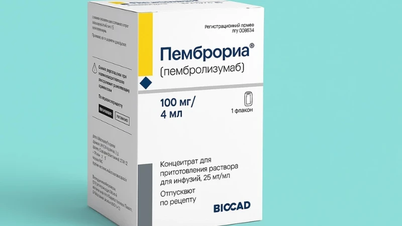


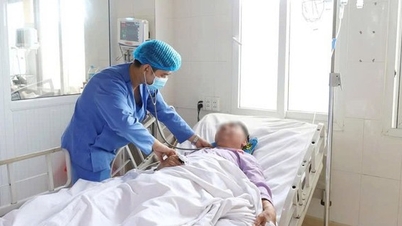




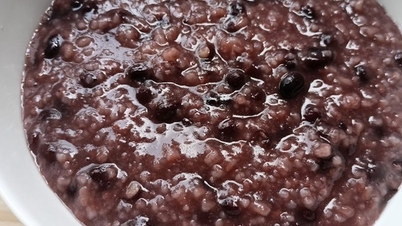
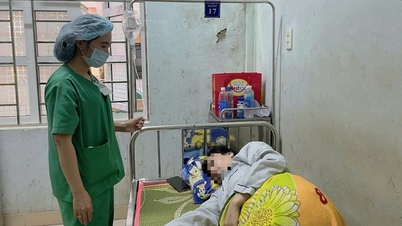



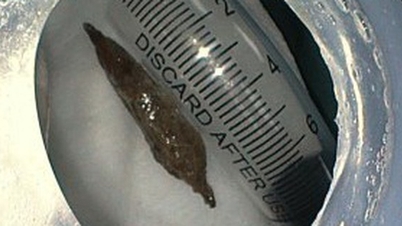




























































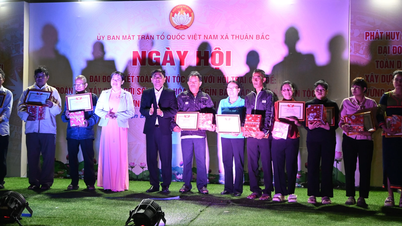





![Dong Nai OCOP transition: [Article 3] Linking tourism with OCOP product consumption](https://vphoto.vietnam.vn/thumb/402x226/vietnam/resource/IMAGE/2025/11/10/1762739199309_1324-2740-7_n-162543_981.jpeg)







Comment (0)